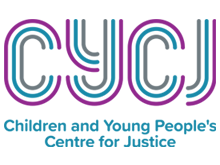About our blogger: Dr Kristen Gurdak is an Assistant Professor at Florida Atlantic University whose research focuses on social inclusion among marginalised groups. Her work explores how culture and context shape identity, resilience, and social inclusion across diverse settings. She conducts cross-cultural comparative studies that inform policy, guide practice, and advance inclusive narratives for society.
In this blog, she explores some of the techniques practitioners can employ to embed psychological safety in their work, to strengthen their relationships and contribute to more sustainable systems. This echoes the development practice thinking in Scotland on uses of contextual safeguarding, participatory practices and working together to keep the promise.
When we think about supporting justice-involved youth, conversations often turn to risk management, rehabilitation, and reducing reoffending. While these are important goals, there is another less visible factor that is just as critical: psychological safety.
Psychological safety is the shared belief that a person can express themselves without fear of judgment, punishment, or harm. Clark’s Four Stages of Psychological Safety[1] includes the following:
- Inclusion safety: Feeling accepted
- Learner safety: Freedom to make mistakes and ask questions
- Contributor safety: Feeling empowered to make contributions to the community
- Challenger safety: Feeling safe to question norms and suggest change
In services that engage with justice-involved youth, it can be the difference between mistrust and genuine engagement.
Young people involved with justice systems frequently carry experiences of trauma, stigma, and exclusion. Many have faced disrupted schooling, unstable housing, or strained relationships with adults and institutions. These experiences can lead to deep-seated mistrust of services and professionals.
Without psychological safety, interactions with youth across sectors can unintentionally reinforce these patterns of mistrust. Youth may stay silent, disengage, or withhold their true thoughts out of fear that honesty will make things worse. On the other hand, when young people feel safe to share their perspectives, it opens pathways to trust, healing, and genuine participation in shaping their future.
Creating Psychological Safety: What It Looks Like in Practice
So how do practitioners help build a sense of safety? A few practical ways include:
- Consistency and reliability: Showing up when you say you will, following through on promises, and being steady in your responses builds trust over time.
- Listening without judgment: Sometimes the most powerful thing you can do is give space for young people to share, without rushing in to correct, label, or offer solutions.
- Involving young people in decisions: Even small choices, like setting meeting times or deciding how to review progress, can give youth a sense of agency. Larger decisions, like where they live or complete education, should always involve their input.
- Responding to mistakes with a growth mindset: Everyone slips up. If a young person feels every misstep with judgment or punishment, they’ll hide their mistakes. When adults respond with curiosity and focus on learning, youth are more willing to try again.
- Modeling openness: Practitioners who lean into their own authenticity by admitting when they don’t know something or acknowledging their own mistakes creates an atmosphere where vulnerability is accepted, not penalized.
Creating psychologically safe environments are not only beneficial for young people but can also support practitioners. Psychological safety strengthens the relationship on both sides. For young people, it nurtures belonging, dignity, and trust. For practitioners, it enables collaboration, creativity, and shared responsibility. Together, these dynamics build systems that are more equitable, effective, and sustainable.
For justice-involved youth, safety isn’t just about physical safety. It’s about feeling safe enough to be honest, to risk trust, and to step into new possibilities. Building psychological safety may sound simple, but it takes commitment, consistency, and courage from the adults around them. If we want to support justice-involved youth in ways that are truly transformative, psychological safety is the place to start. It’s in these safe spaces that trust grows, voices are heard, and futures are reshaped.
[1] Clark, T. R. (2020). The 4 Stages of Psychological Safety: Defining the Path to Inclusion and Innovation. Berrett-Koehler Publishers.

Leave a Reply
You must be logged in to post a comment.